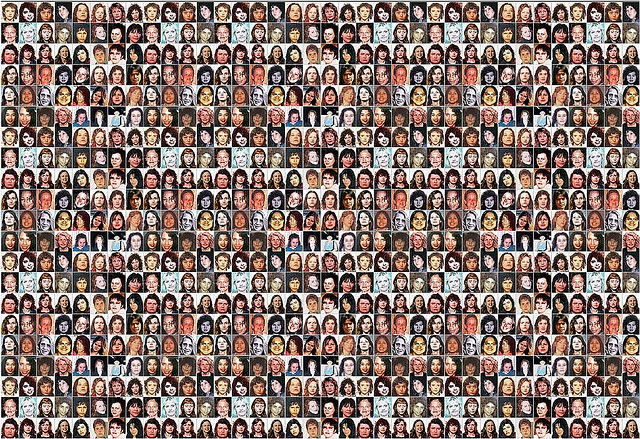ike this article? Chip in to keep stories like these coming.
On November 12, 1971, Helen Betty Osborne was sexually assaulted and brutally murdered in the Pas, Northern Manitoba. On August 2014, we learned about the brutal murder of 15 year old Tina Fontaine in Winnipeg, Manitoba.
Within the 43 year time span between the two murders, hundreds of Indigenous women have continued to go missing or have been murdered in every region across Canada.
Since 1996, when the Royal Commission on Aboriginal Peoples was released, over 40 reports have been delivered to the federal government calling for a national inquiry into missing and murdered Indigenous women.
In August 2014, the premiers of Canada also called for an inquiry with the chairman of the group of premiers stating there are two possible routes to getting a national public inquiry into missing and murdered Indigenous women: Prime Minister Stephen Harper changes his mind and calls one — or he is defeated in the 2015 federal election.
The Harper government consistently refuses to address the issue saying it is, “Not high on the government’s radar.”
With no end to the violence in sight, Harper’s refusal to act equals an act of violence against Indigenous women because it works to perpetuate the current status quo, which is unacceptable.
Saturday, February 14, 2015 marked the 25th Annual Memorial Walk for Missing and Murdered Indigenous Women in Canada. Outrage and sadness will continue to spurred across the country as Indigenous and non-Indigenous communities and organizations at national, provincial and international levels called once again for a public inquiry that includes meaningful engagement with leadership from the families of the victims as well as Indigenous communities and political organizations.
Last week political leaders from First Nations across Ontario joined together to begin their own inquiry into missing and murdered Indigenous women at a three-day gathering in Thunder Bay. “The federal government refuses to acknowledge the need for a national inquiry and we will not sit and wait any more,” said Deputy Grand Chief Denise Stonefish of the Association of Iroquois and Allied Indians.
However the Canadian public must still engage and contribute solutions to this systemic issue.
Visit the Native Women’s Association of Canada to find out where to join our sisters and show the Harper government that Canadians take this issue seriously and could soon bring his government down over it.
Here’s a list of some of the most recent reports calling for the Canadian public to address the issue.
1. SUMA backs inquiry into MMIW, pushes to keep revenue sharing stable, Feb. 3, 2015:
The Saskatchewan Urban Municipalities Association, SUMA joined their voices in support of an inquiry into missing and murdered Indigenous women.
2. The Inter-American Commission on Human Rights (IACHR) Issues Report on missing and murdered women, December 21, 2014:
The IACHR report focuses on British Columbia and recommends movement to address violence against women and support for the creation of a national-level action plan or nation-wide inquiry into the issue of missing and murdered Indigenous women.
3. The Women’s Legal Education and Action Fund (LEAF) makes new research available, December 6, 2014:
Following the murder of Inuit university student Loretta Saunders, LEAF published two documents which list and synthesize 40 reports for MMIW advocates.
4. The Special Committee on Violence Against Indigenous Women issue report, March 2014:
The Special Committee on Violence Against Indigenous Women issues a report called ‘Invisible women: A Call to Action — ACAT Canada’, concludes by saying “the families will have to wait until the government changes to get the National Public Enquiry and National Action Plan”
5. UN Special Rapporteur James Anaya visits Canada and issues report on situation of Indigenous in Canada, July 2014:
United Nations Report — Crisis in Canada following a visit to Canada from October 7-11, 2013 by James Anaya, Special Rapporteur on the rights of Indigenous peoples in Canada. The document highlights least 29 official inquires with 500 recommendations for action have been put forward since 1996.
6. Ontario Federation of Indigenous Friendship Centres respond to Royal Canadian Mounted Police, May 2014:
Ontario Federation of Indigenous Friendship Centres (OFIFC) response to Royal Canadian Mounted Police (RCMP) Operations Report slams the November 2013 document. The OFIFC outlines inconsistencies and calls on the RCMP to provide concrete actions to address the high rates of missing and murdered Aboriginal women in Canada.
7. RCMP issue report Missing and Murdered Aboriginal Women: A National Operational Overview, November 2013:
Over ten years after Stolen sisters was issued, the RCMP responds to missing and murdered Indigenous women. Brought us to a shocking total of 1100+ cases. Presently, the document is the most cited report used by media.
8. Coordinating Committee of Senior Officials (Criminal): Missing Women Working Group issues report and recommendations, January 2012:
Coordinating Committee of Senior Officials (Criminal): Missing Women Working Group established in February 2006. Focuses between 2006 and 2010 confirming factors under which Aboriginal women became victims of violence and issues recommendations to reduce these factors.
9. Missing Women Commission of Inquiry issues a report in response to Robert Pickton case, November 2012:
The Missing Women Commission of Inquiry issues a report entitled ‘Forsaken: The Report of the Missing Women Commission of Inquiry Executive Summary’ a four volume response to British Columbia’s Missing and Murdered women in the wake of the Robert Pickton case.
10. Amnesty International report documents stories of missing and murdered Indigenous Women, October 2004:
Amnesty International Report entitled ‘Stolen sisters — A human rights response to Discrimination and Violence against Aboriginal women in Canada’ documents the stories of missing and murdered women over 30 years. The culmination of many inquiries (starting as far back as 1971), the report called for “Canadian officials to ensure the rights and safety of Aboriginal people are respected and upheld by police and courts.”
This piece originally appeared on MUSKRAT Magazine and is reprinted with permission.
Photo: flickr/ Renegade98



